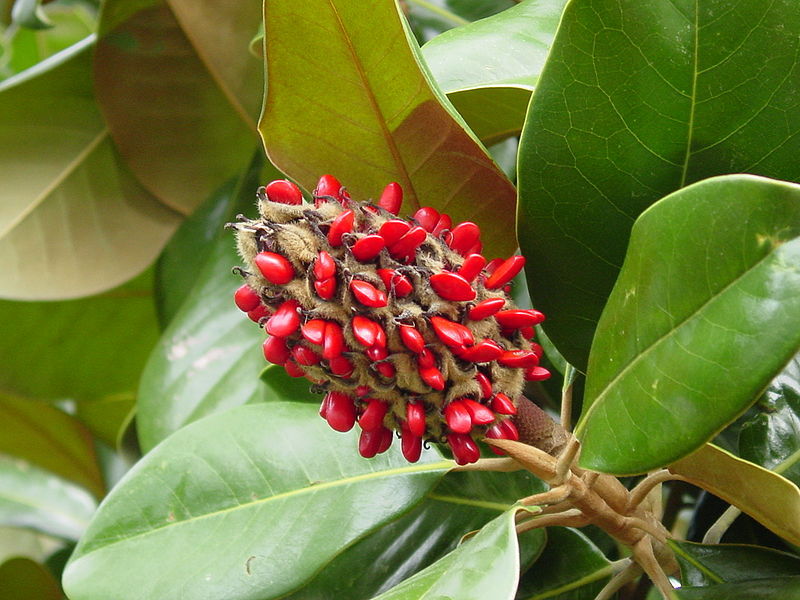Southern Magnolia : Physical Description
This tree has its origins in North America and is referred to as a classic part of southern landscapes. Beloved for its magnificent flowers that bloom in shades of pink, cream, purple, yellow, and many others, this tree can be found in a range of states including California and Vermont. The Southern magnolia begins to flower in late May and early June, unfortunately during a time that school is out and the majority of campus will not be able to witness as the flowers only last about two to four days. This specimen can grow to heights of 60 to 80 feet and can spread 30 to 40 feet wide. The Southern magnolia that can be found on our campus outside of the Marsh Life Science building is of a medium height with a canopy radius of about 6 ft. The leaves found on the Southern magnolia have an oval shape and grow in an alternate arrangement. The thick, leathery leaves of this tree are a dark, glossy green on top with brown fuzz underneath.
The Southern magnolia is the only member of its family, besides the Sweetbay magnolia, to be classified as an evergreen; therefore its leaves maintain a green broad leaf until it drops its leaves. This tree produces brown and red fruits that attract birds and insects, but also creates a litter problem around the outskirts of the tree. The fruit of this tree is unlike any other I have seen, as it is a brown pod with many red leathery seeds sticking out. Although beautiful to the eye this tree does have thorns so be careful when approaching its delicate flowers! The Southern magnolia is perfect for landscaping purposes because it does not require much pruning, except when you want to make a flower arrangement with its blooms. This tree also does very well in cities because its resistance to damage by sulfur dioxide.

